Mini red velvet cupcakes are tender, moist, and made entirely from scratch. These eye catching two-bite treats are topped with a classic ermine frosting that's silky and less sweet than traditional buttercream.
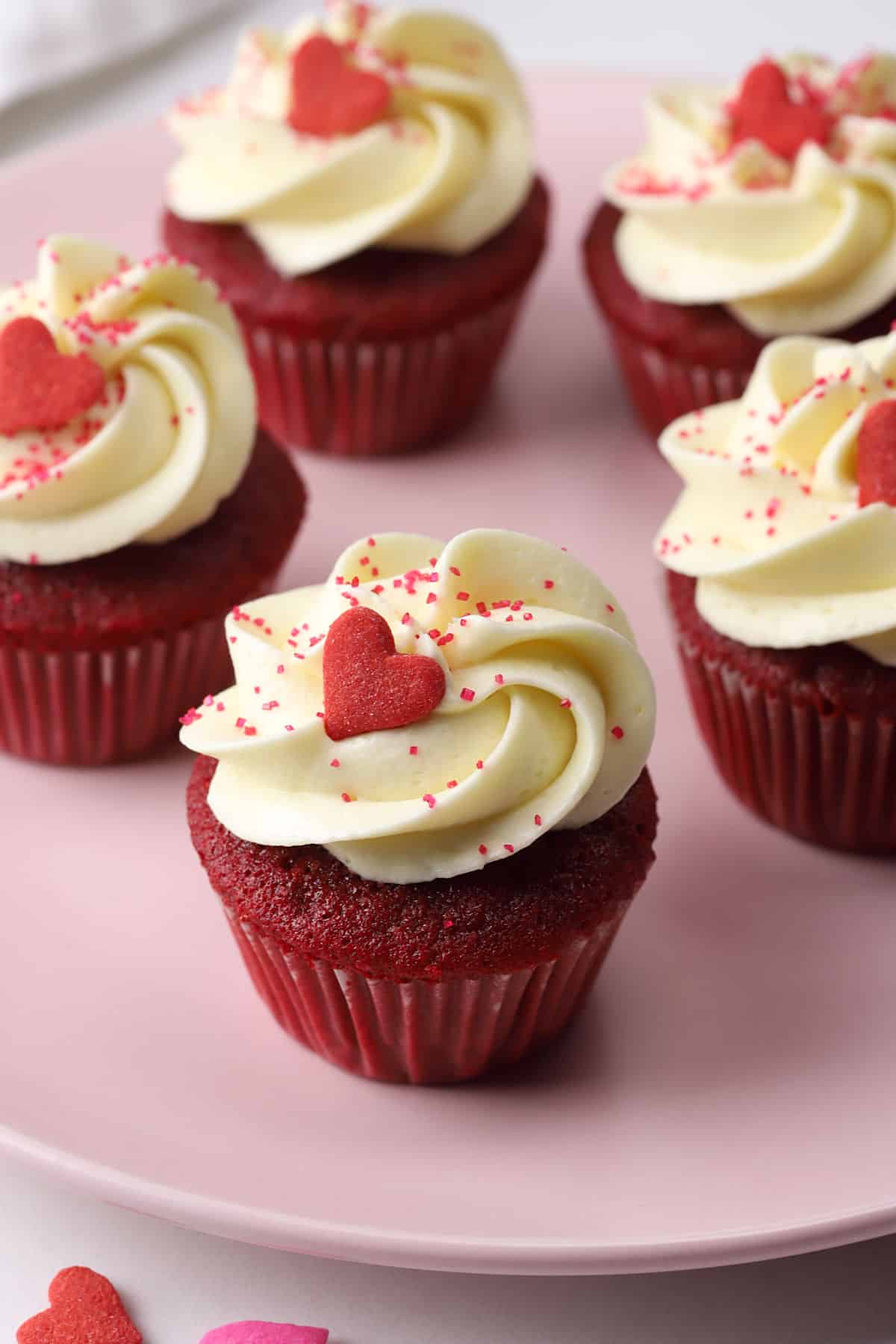
Readers have made my vanilla cupcakes, white cupcakes, and chocolate cupcakes for years now. It's time to introduce a new flavor to the family - red velvet cupcakes (in mini form)!
Today we're using cake flour, which makes these cupcakes tender and soft. We're also using a combination of butter and oil, which adds the perfect amount of moisture and buttery flavor.
We're topping these mini cupcakes with a silky, less-sweet ermine frosting, which you may know as flour frosting or boiled milk frosting. Red velvet cake is traditionally topped with ermine frosting. However, cream cheese frosting and buttercream frosting are popular alternatives.
These cute, two-bite mini cupcakes are perfect for Valentine's Day, Christmas, or for filling a dessert tray at your next birthday party.
Ingredients and substitutions
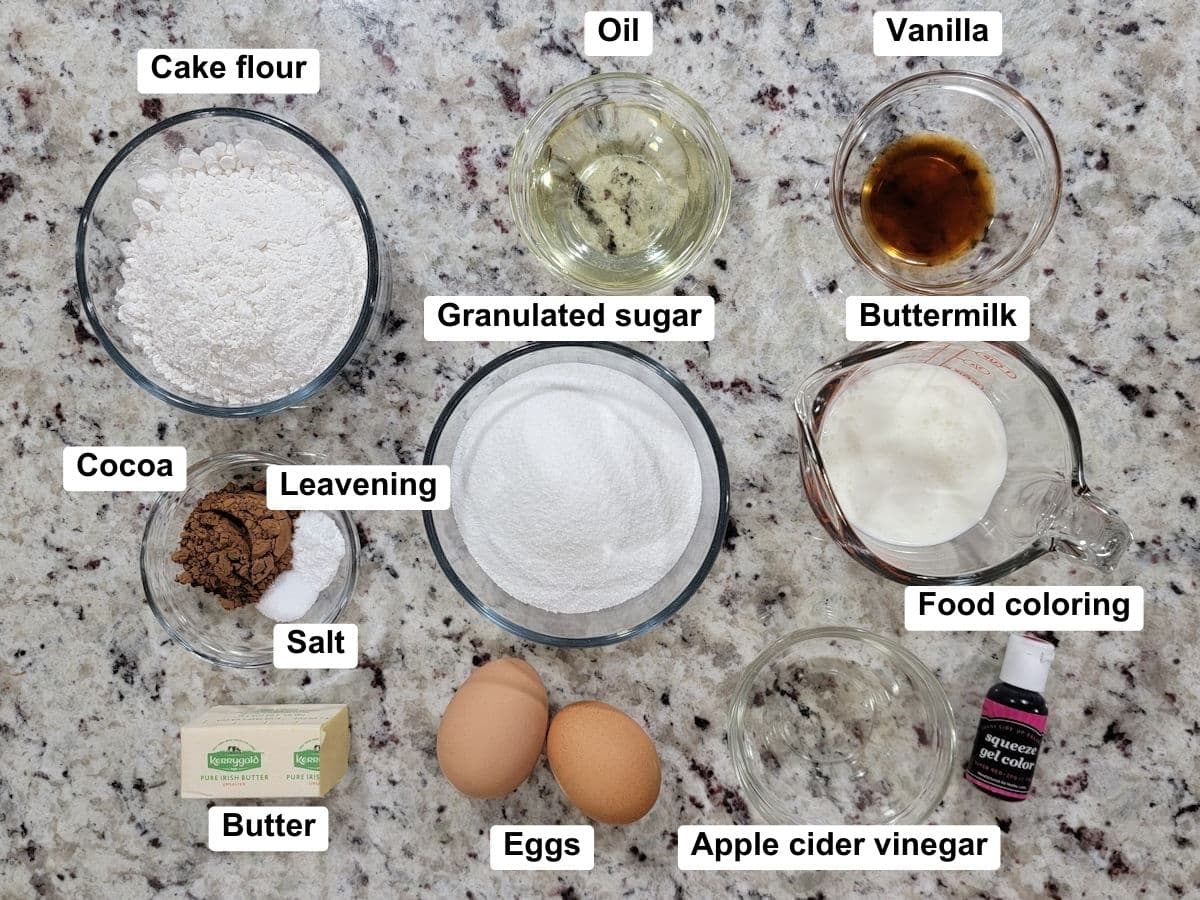
- Cake flour - Cake flour gives your cupcakes a tender, small crumb and soft texture. This recipe can be made with all-purpose flour, but your cupcakes will have a coarser crumb, which readers sometimes describe as a 'cornbread' texture.
- Cocoa powder - Just enough cocoa powder is added to darken the cake batter slightly and add a hint of chocolate flavor.
- Baking soda - Adds lift to your cupcakes to help them rise in the oven. It cannot be substituted with baking powder, the two are not interchangeable. This recipe was developed so that the acidic ingredients (buttermilk and vinegar) provide the proper amount of leavening with the baking soda.
- Salt - Enhances the flavor of your cupcakes.
- Unsalted butter & oil - I like to use a combination of butter and oil for red velvet. While both help make your cupcakes moist, butter adds flavor, and oil adds a little extra moisture.
- Granulated sugar - Sweetens your cupcakes and helps them retain moisture.
- Eggs - Adds structure and moisture to your cupcakes.
- Vanilla extract - Adds depth of flavor.
- Buttermilk - Buttermilk (or buttermilk substitute) adds moisture, lift (when combined with baking soda), and tangy flavor. If you don't have buttermilk on hand, here's an easy buttermilk substitute: to your liquid measuring cup, add 1 tablespoon of vinegar. Then, fill to the 1-cup line with whole milk. Allow to set for 5 minutes (your milk will look a little curdled, this is normal), then use as directed in the recipe below.
- Apple cider vinegar - Adds tangy flavor and acidity to help your cupcakes rise in the oven.
- Gel food color - Gel food coloring can be substituted with liquid food coloring at a 1:2 ratio. Gel food coloring is more concentrated, so you'll need twice as much liquid food coloring to achieve the same color intensity.
What is red velvet cake?
Red velvet is a cake with a complex flavor. Not just chocolate cake or vanilla cake - it's a combination of both, but at the same time something more.
It's a blend of vanilla, chocolate, and butter, with a little tang from the addition of buttermilk and vinegar.
Red velvet originally got its red tint from the addition of beet juice, but it's common now to use red gel or red liquid food coloring.
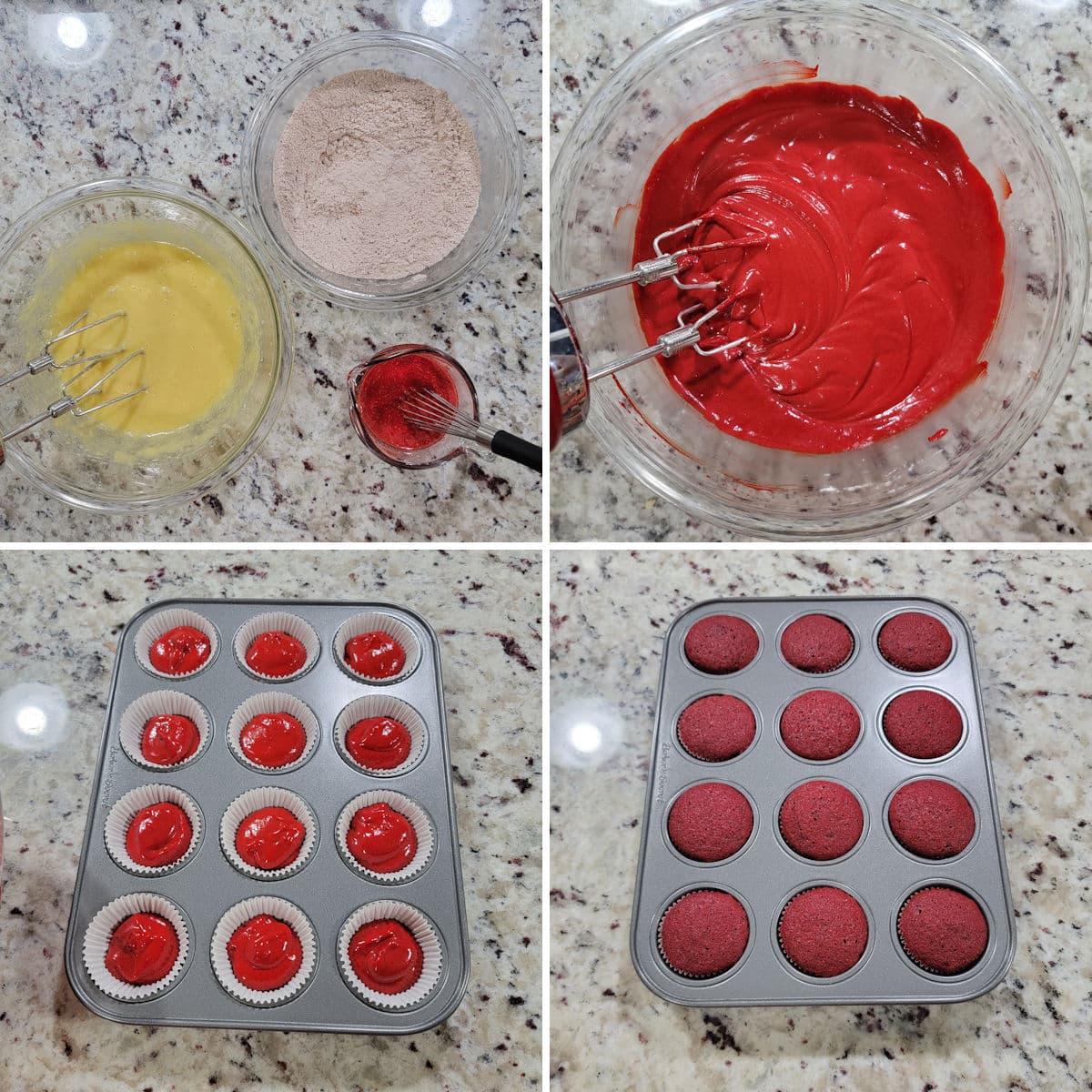
Red food coloring
Gel food coloring is concentrated, which means you'll use less to achieve a bold and vibrant color in baking. Liquid food coloring contains a lot of extra liquid, meaning it takes more to achieve a bold color. Liquid food coloring works well for pastel baked good, and is generally inexpensive and easy to find.
For a natural alternative, beetroot powder is a popular choice. I haven't personally tested this recipe with beetroot powder, so I can't say how it would turn out.
- AmeriColor Super Red Soft Gel Paste, .75 oz
- McCormick Red Liquid Food Color, 1 fl oz
- Premium Beet Root Juice Powder, 8 oz
Types of frosting
Traditionally, red velvet cake is topped with ermine frosting. Made with flour, granulated sugar, milk and butter, this frosting is cooked on the stovetop and requires a few extra steps to prepare. You may also know it as boiled milk frosting or flour frosting. I've included my recipe for ermine frosting in the recipe card below.
Cream cheese frosting and buttercream frosting have increased in popularity as alternatives. Both require no cooking and are ready in minutes. All of these frostings pair well with red velvet cupcakes, so feel free to choose your favorite.
- Ermine frosting (least sweet)
- Cream cheese frosting
- Whipped buttercream frosting (sweetest)
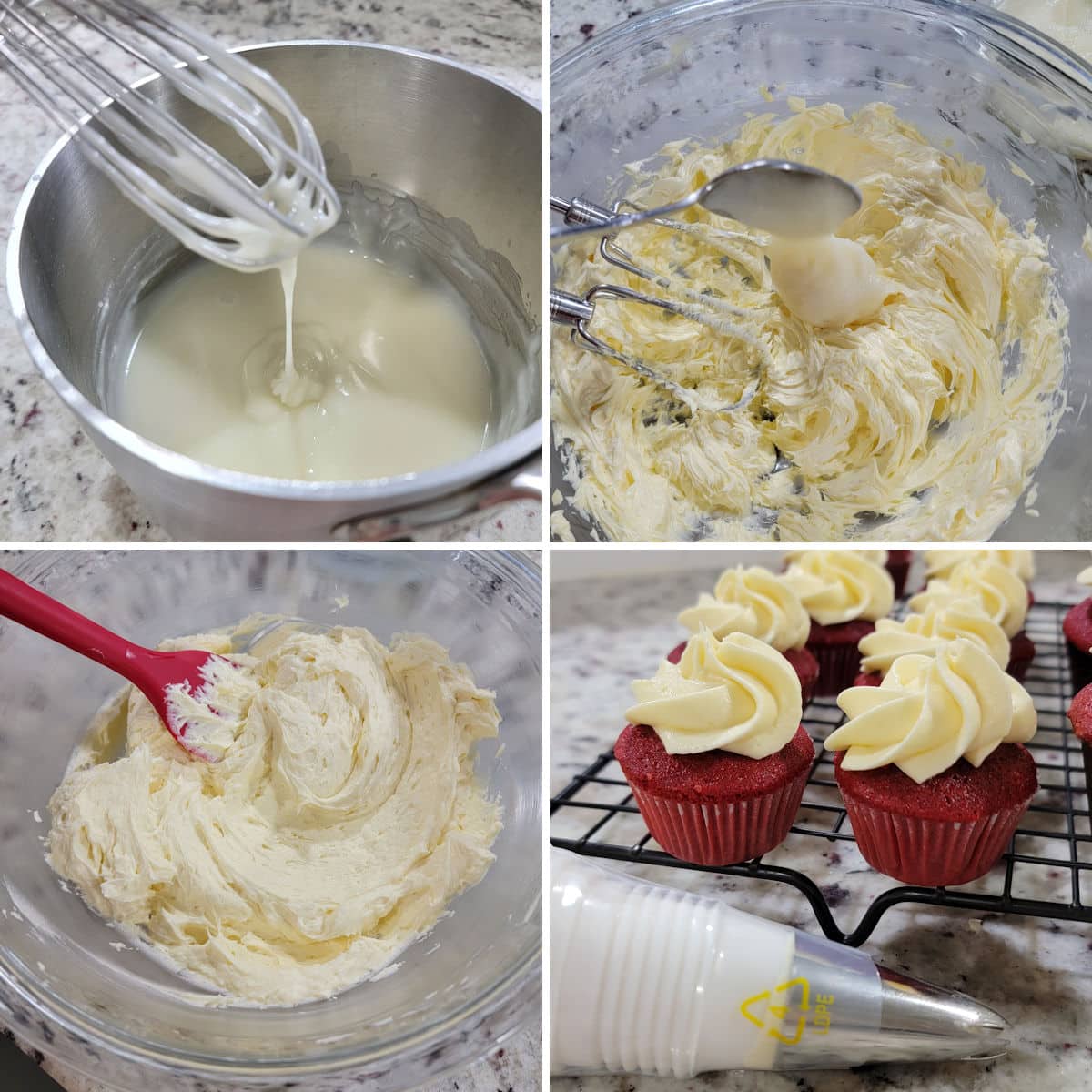
Cake tips and tricks
- Make sure you're using baking soda and not baking powder. There is a difference, and baking powder will not work in this recipe.
- Properly measure your flour either by measuring with a kitchen scale, or using a spoon to scoop flour into your measuring cup, then using a knife to level off the top. Scooping using your measuring cup compacts flour into the cup, adding extra flour to the recipe.
- Only mix the batter until the ingredients are incorporated. Overmixing your batter can whip extra air in, causing the cupcakes to rise quickly and then fall in the center when they bake.
- Do not unwrap cupcakes while they're still warm. Cupcakes will stick to the liners until they are fully cooled throughout. Once cooled, your cupcakes will easily unwrap.
- Are your cupcakes sticky on top? This can be caused by humidity in your home or storing cupcakes while they're still warm. This can't really be fixed, but can easily be covered with frosting.
- Do not frost warm cupcakes! Ermine frosting and buttercream frosting are sensitive to heat and will melt between 90 to 95 degrees Fahrenheit.
How to prevent dry cupcakes
Dry baked goods are the most common issue in cake and cupcake baking. Here are a few easy tips to make sure your cupcakes turn out moist and tender.
- Properly measured flour - I mentioned this earlier, but it's a very important step in any baking that involves flour. Measuring too much flour into your batter not only dries your baked goods out, but it also dilutes the flavor of the other ingredients (like butter, vanilla, cocoa, and sugar). For 100% accuracy, I highly recommend using a kitchen scale. This ensures you're adding the exact measurements that I used in my recipe. If you don't have a kitchen scale, I recommend the spoon and level method. Give your flour a quick stir, then gently spoon the flour into your measuring cup until heaping. Level off the top with the straight edge of a knife.
- Don't substitute ingredients - Several ingredients in this recipe, including some you may not realize, add moisture and help your cupcakes retain moisture after baking. Substituting, reducing, or omitting those ingredients can make your cupcakes turn out dry. Eggs, sugar, butter, oil, and buttermilk all add moisture to this recipe. Sugar attracts and locks in moisture, which keeps your baked goods soft and moist for days.
- Don't overbake your cupcakes - This may seem obvious, but if you've properly measured your ingredients and haven't substituted anything, the only reason your cupcakes will turn out dry is from overbaking. Ovens can run slightly hotter or colder than the next oven, so my 350 degrees may be 330 or 365 for you. I highly recommend (for any new recipe, not just this one) checking for doneness a few minutes early, just in case your oven runs a little hot. The times listed in the recipe card are time frames that worked for me and they can vary slightly oven to oven.
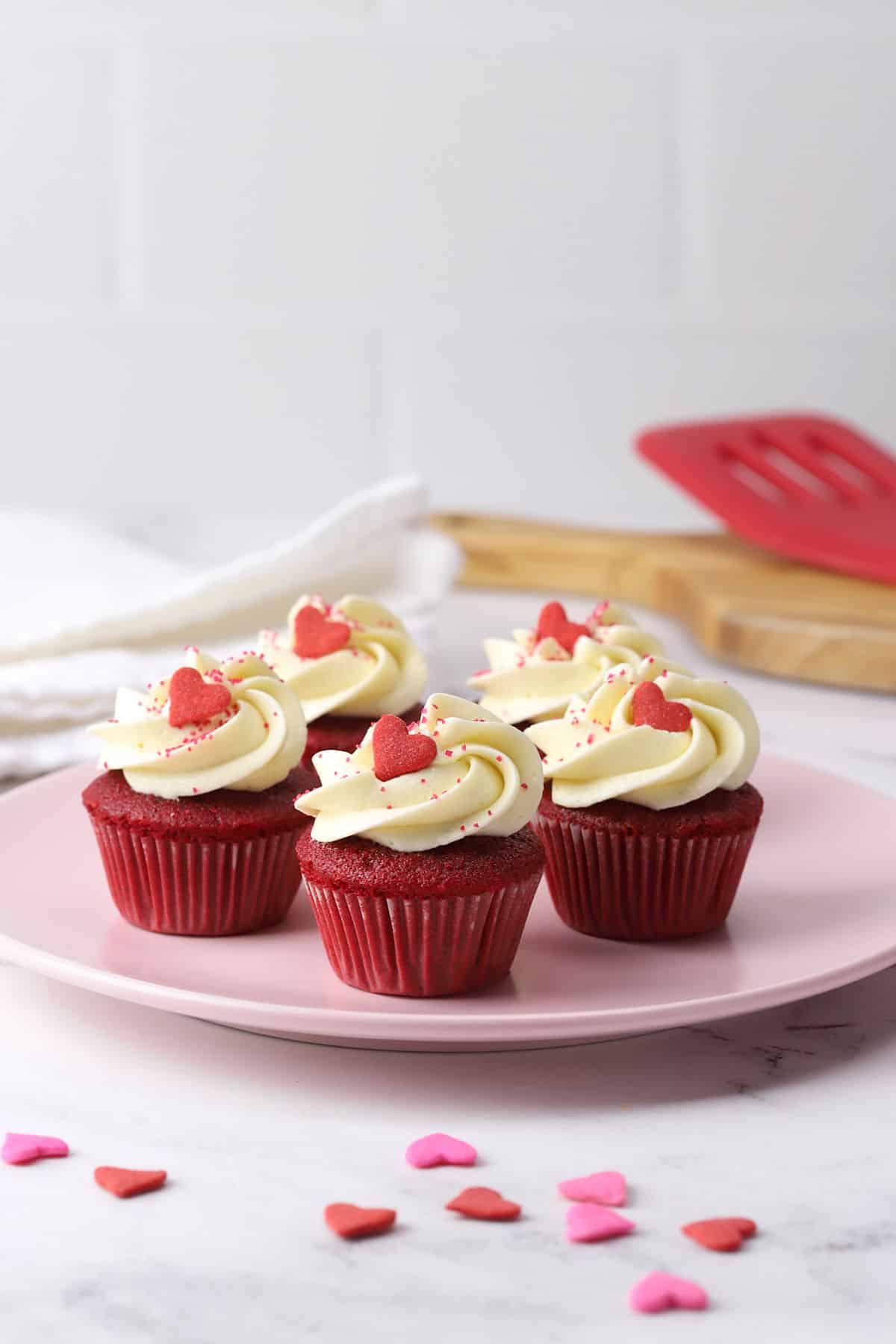
How to test for doneness
Toothpick - Using a toothpick is a popular method to test for doneness. Stick a toothpick into the center of a cupcake. If it comes out with crumbs, they're done. If it comes out with wet batter, they need more time.
Spring back - Press a finger gently onto the top of one of your cupcakes. If it springs right back, your cupcakes are done. If it leaves an indent, your cupcakes need more time.
Thermometer - You can also use an instant read thermometer to test for doneness - cupcakes are done when they reach 205 degrees Fahrenheit in the center.
Can I make regular cupcakes?
Yes! This recipe makes 45 mini cupcakes or 15 standard size cupcakes. Divide your batter between 15 cupcake liners and bake for about 18-21 minutes, or until a toothpick inserted into the center comes out with crumbs, not wet batter.
Recommended
📖 Recipe
Mini Red Velvet Cupcakes
Ingredients
Mini red velvet cupcakes
- 1.5 cups (168 g) cake flour
- 1.5 tablespoons natural cocoa powder
- ½ teaspoon baking soda
- ¼ teaspoon salt
- ¼ cup (57 g) unsalted butter, room temperature
- 1 cup (198 g) granulated sugar
- 2 large eggs, room temperature
- 2 teaspoons vanilla extract
- ¼ cup (49 g) vegetable oil
- ½ cup (120 g) buttermilk, room temperature
- 1 teaspoon apple cider vinegar, or white vinegar
- 2 teaspoons gel food coloring
Ermine frosting
- ¾ cup (149 g) granulated sugar
- ¼ cup (30 g) all-purpose flour
- ½ teaspoon salt
- 1 cup (240 g) whole milk
- 1 cup (226 g) unsalted butter, room temperature
- 2 teaspoons vanilla extract
Instructions
Mini red velvet cupcakes
- If making ermine frosting, I suggest starting the frosting first. While the frosting base cools, prepare your cupcakes.Preheat oven to 350 degrees Fahrenheit. Line a mini cupcake pan with 45 liners (or bake in separate batches if you have a smaller pan) and set aside.
- In a bowl, add dry ingredients: cake flour, cocoa powder, baking soda, and salt. Whisk to combine and remove any clumps. Set aside.
- In a large bowl, add butter and granulated sugar. Using a hand mixer, beat to combine. Add vanilla and eggs and beat until smooth and creamy. Set aside.
- In a separate bowl, add oil, buttermilk, vinegar, and food coloring. Stir to combine.
- To your egg mixture, add half of the dry ingredients. Stir until just incorporated. Add half of your buttermilk mixture and stir until just incorporated. Repeat once more to add your remaining dry and wet ingredients. Do not overmix.
- Portion 1 tablespoon of batter into each mini cupcake liner, filling about halfway full. Bake for about 10-12 minutes, or until a toothpick inserted into the center comes out with crumbs, not batter. Allow to rest in tray for 5 minutes before transferring cupcakes to a cooling rack to finish cooling.
Ermine Frosting
- In a saucepan over medium heat, add sugar, flour, and salt. Whisk in milk and continue whisking until smooth.
- Cook over medium heat for about 5 to 7 minutes, whisking frequently, until mixture looks very thick (like sweetened condensed milk consistency). Remove from heat.
- Transfer mixture to a bowl. Press plastic wrap over the top of the mixture and up the sides of the bowl to prevent a skin from forming. Allow mixture to cool completely to room temperature, about an hour. (To speed up cooling, transfer to the refrigerator, but don't allow it to go below room temperature. Mixture will solidify and become difficult to work with.)Now is a good time to prepare your cupcakes.
- Once flour mixture has cooled, add room temperature butter to a large bowl and beat with a hand mixer (or a stand mixer) until light and fluffy, about 2 to 3 minutes.
- Add your cooled flour mixture, 1 tablespoon at a time, to the whipped butter and beat until smooth, scraping the sides of the bowl frequently. Continue until all of your flour mixture has been incorporated. (If your flour mixture is even a little warm it will melt the butter and ruin the frosting. Flour mixture must be room temperature, not warm, for this step).
- Add vanilla extract and mix to combine. Frosting should be silky smooth with a whipped texture.
- Pipe or spread frosting with a knife onto cupcakes and serve.
Equipment Recommendations
Notes
- This recipe makes 45 mini cupcakes or 15 standard size cupcakes.
- To make standard size cupcakes - divide batter between 15 cupcake liners (about 3 tablespoons per cupcake) and bake for about 18-21 minutes, or until a toothpick inserted into the center comes out with crumbs, not wet batter.
- Food coloring: 2 teaspoons gel food coloring can be substituted with 4 teaspoons liquid food coloring. Or, food coloring can be omitted entirely for pale brown cupcakes.
- Ermine frosting can be substituted with your favorite frosting - popular choices include cream cheese frosting and buttercream frosting.
- Ermine frosting melts at high temperatures, around 90 to 95 degrees Fahrenheit. If you live in a tropical/humid environment, I suggest storing cupcakes in the refrigerator.
- Be sure to check out my 10 tips for baking cake, based on reader comments and questions!

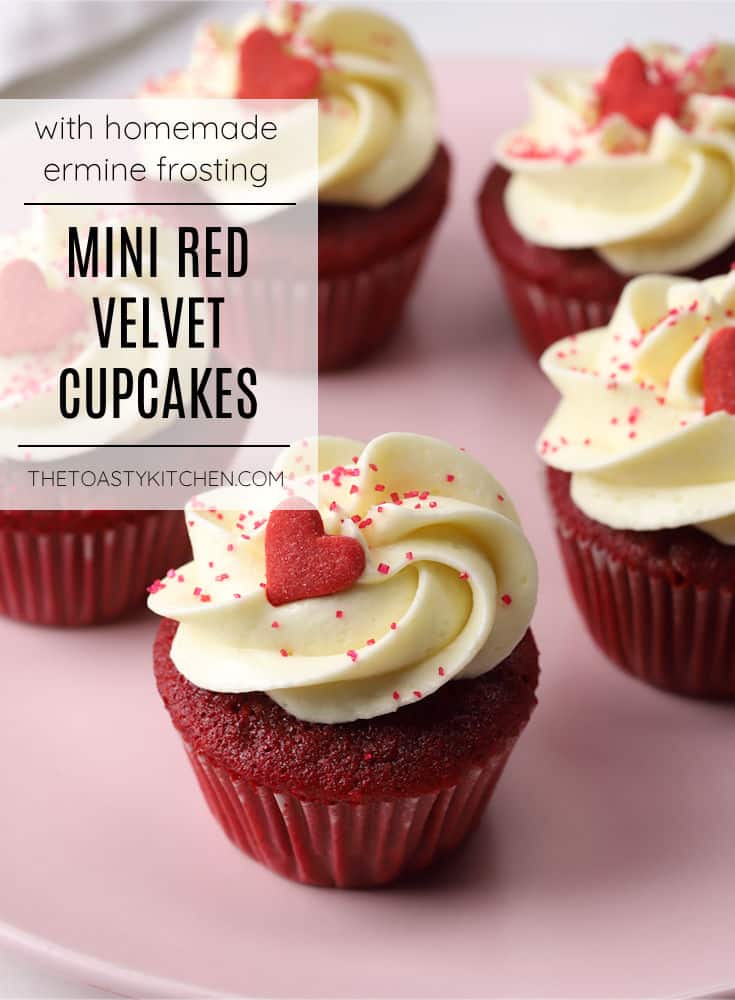
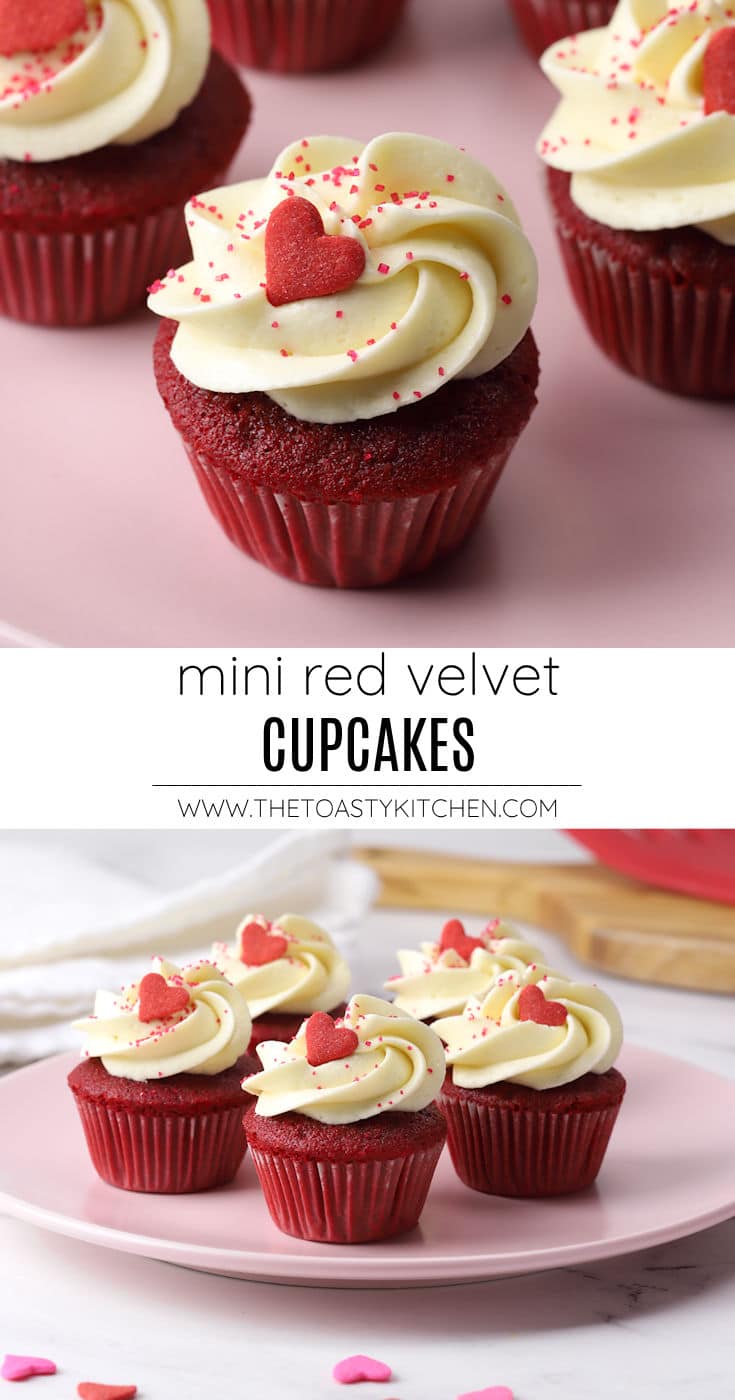
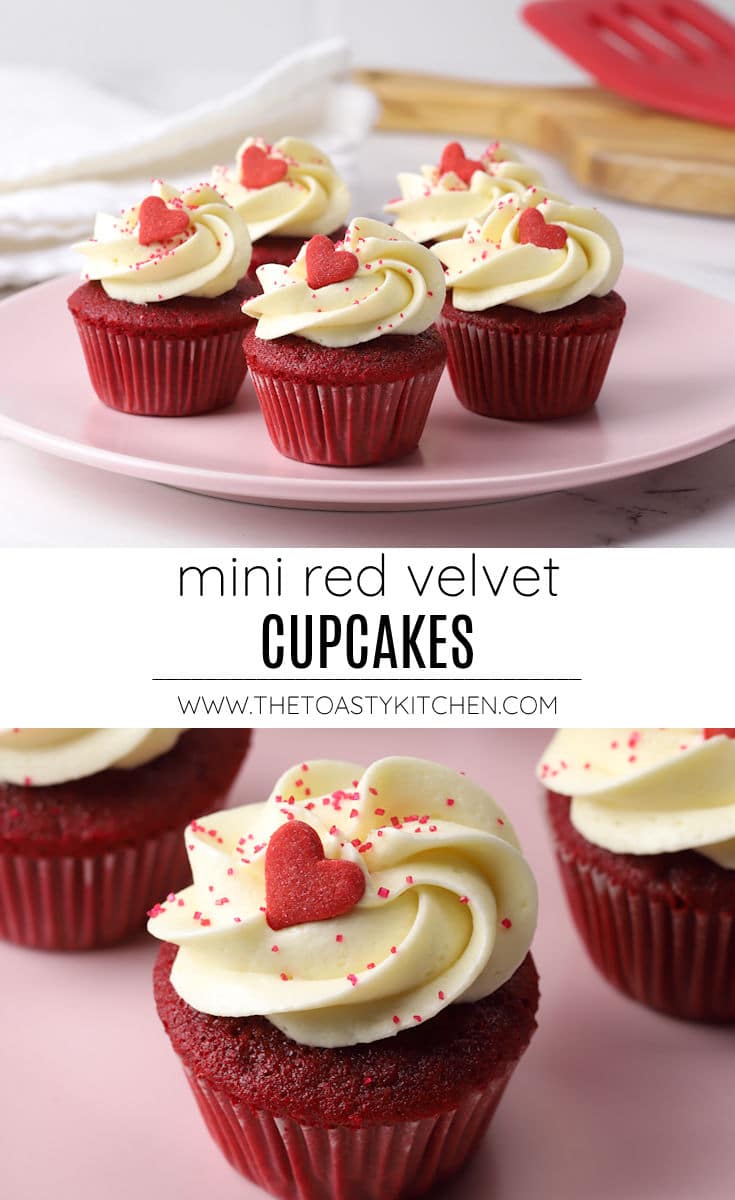
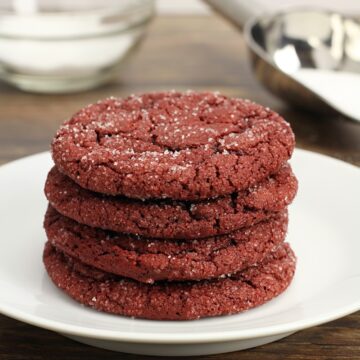

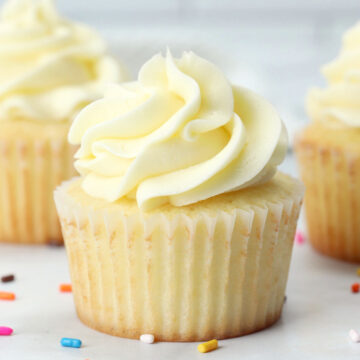
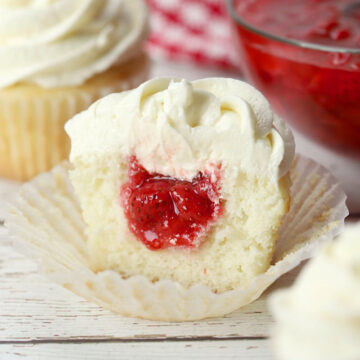
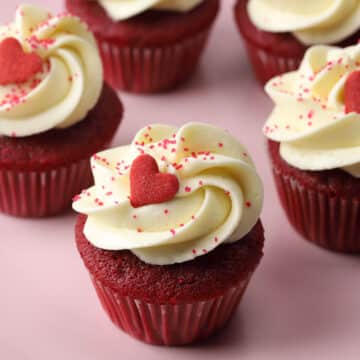
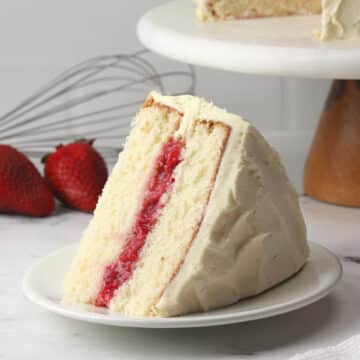
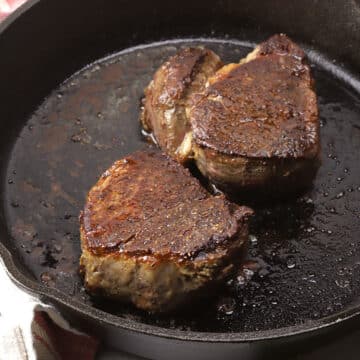
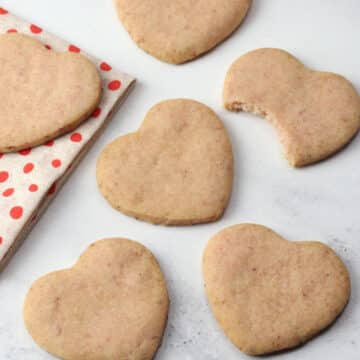
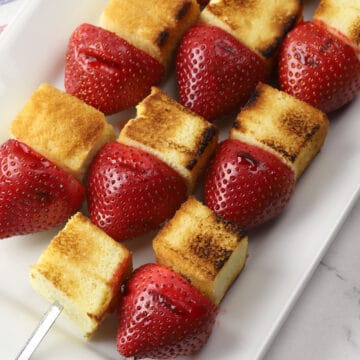
Comments
No Comments